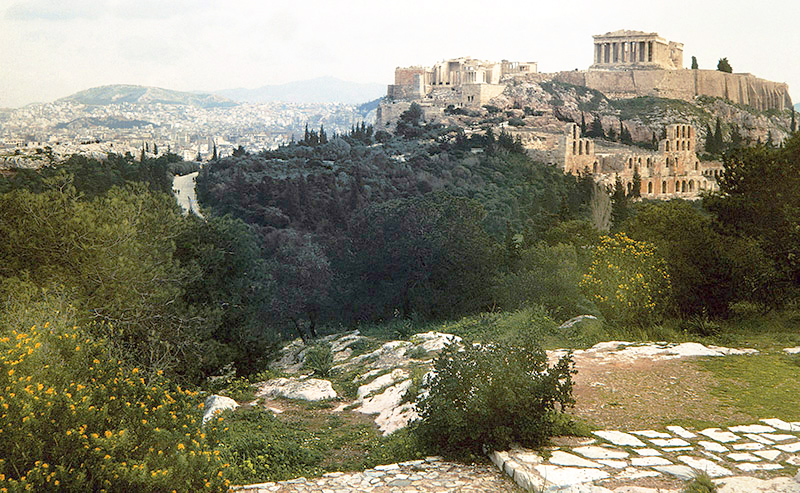
Bible, History, Archaeology
Bible,
History,
Archaeology
The apostle Paul in Athens
Contents:
Athens rebuilt – Paul in Athens – Altar «to an unknown god» – Greek currency
Athens, one of the great cultural centers of antiquity, grew up around a rocky plateau 158 m high, called the Acropolis.
A proposed reconstruction of ancient Athens.
Athens was a city-state in ancient Greece: it symbolized the apogee of Greek civilization and was one of the most important cities of antiquity, not least for its cultural influence. © DR.
Paul in Athens
This is the site of the Parthenon, a famous architectural marvel, as well as many other sacred edifices that have earned the area its nickname of’Acropolis with its many temples.
Image opposite The Acropolis of Athens is a rocky limestone plateau rising in the center of the city of Athens, where it served for many years as a religious sanctuary during Antiquity, and as a citadel from ancient Athens to the Ottoman occupation. Louis Pascal.
This, then, is the context in which Paul exercised his ministry: he spoke daily in the public square to the citizens, among whom were Stoics who believed essentially in universal reason and the selfless pursuit of virtue and duty, and Epicureans who strove to achieve serenity and happiness through the cultivation of the mind and virtue, and believed that after death, the particles that make up the body are dispersed. They said to themselves: this must be a preacher of foreign divinities (Acts 17, 17-18). As a result, they took him to the Areopagus to explain himself before an informal assembly of the council. Standing before these representatives of the most educated and cultured men of the time, and before all those who had come to listen to him, Paul speaks of the «unknown god» (v. 23) and delivers an unusual message in a polytheistic environment. Some laughed at him, others were rather impressed, and a few believed. Paul's message may have been of some interest to these philosophers, but the idea of resurrection was particularly unacceptable to them.
Thanks to the American School of Classical Studies, the market square has been exhumed, its streets drawn and its ruins identified.
Today, you can still see the thirty-five stone steps carved into the rock that lead up to the Areopagus, as well as traces of an altar and numerous stone benches at the top of the hill. Thousands of tourists from all over the world climb these steps.
To the south-west, you can see the ancient road leading to Corinth, where Paul headed after his short stay in Athens.
No altar with the inscription : «To an unknown god», like the one Paul saw. However, an identical inscription was found in 1903 during excavations at the site of the city of Pergamon.
A proposed reconstruction of the Athens altar «to an unknown god» at Villa Kériylos, Beaulieu-sur-Mer.
This villa is an original reconstruction of an ancient Greek residence, the realization of a dream by Théodore Reinach (1860-1928), a French archaeologist and statesman fascinated by Greek civilization © Théo Truschel.

It was in the 5th century BC that Athens imposed its currency, the famous owl staters, throughout the eastern Mediterranean. History tells us how Athens imposed its monetary domination on the other Greek cities, within the framework of the League of Delos. Initially freely accepted, this domination by Athens was later transformed into imperial domination, provoking resistance and wars.


